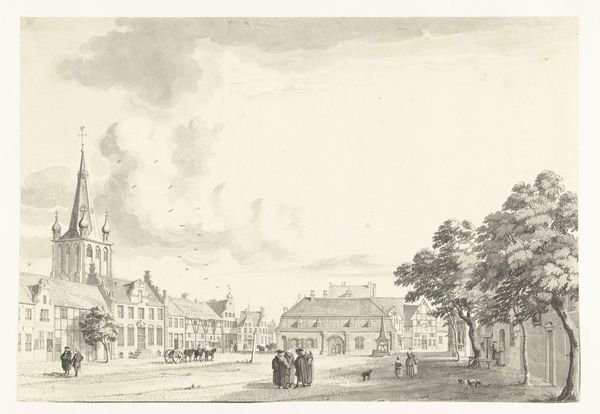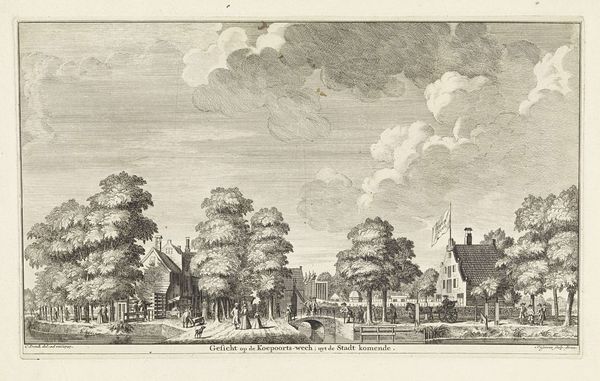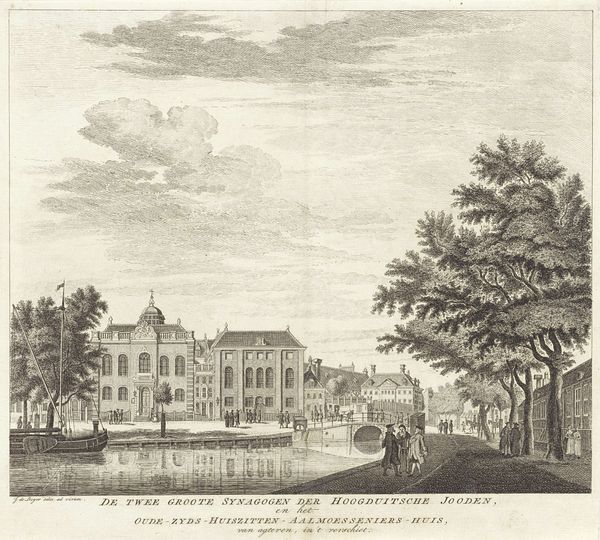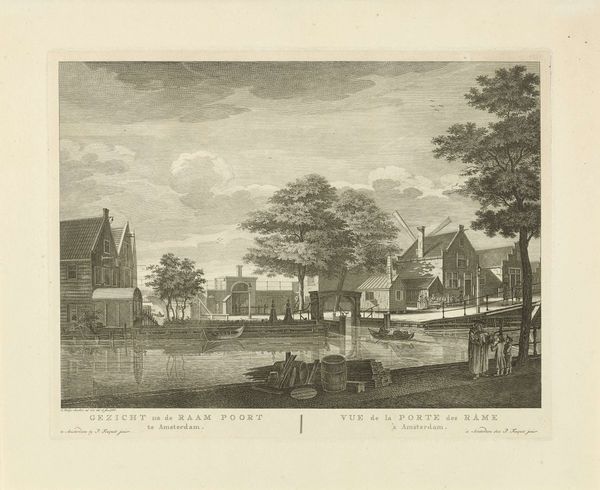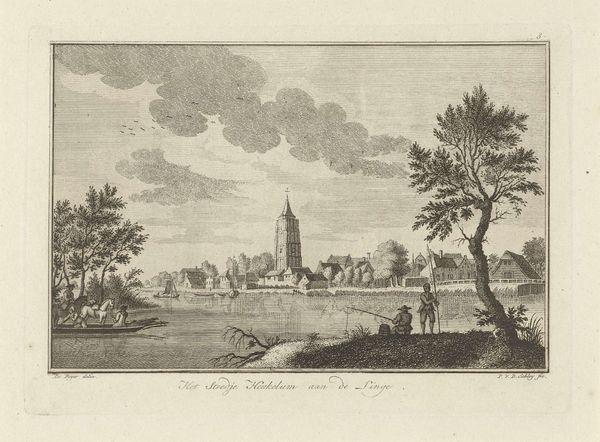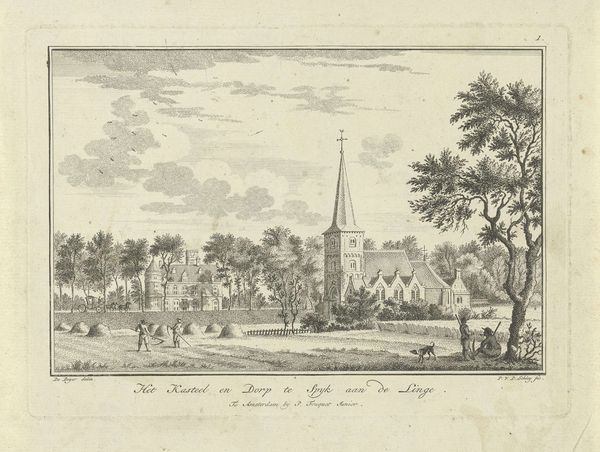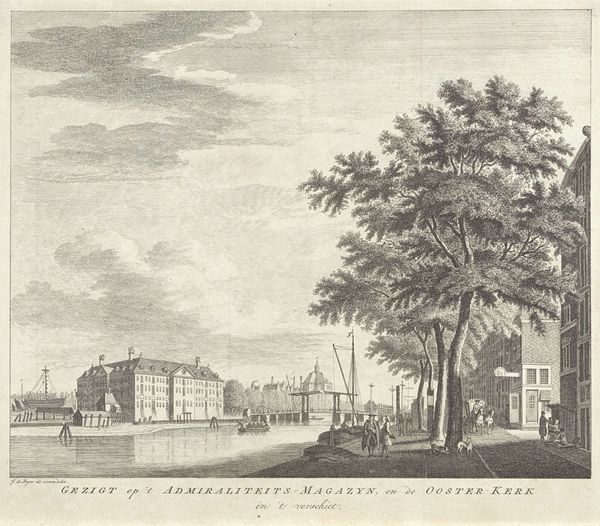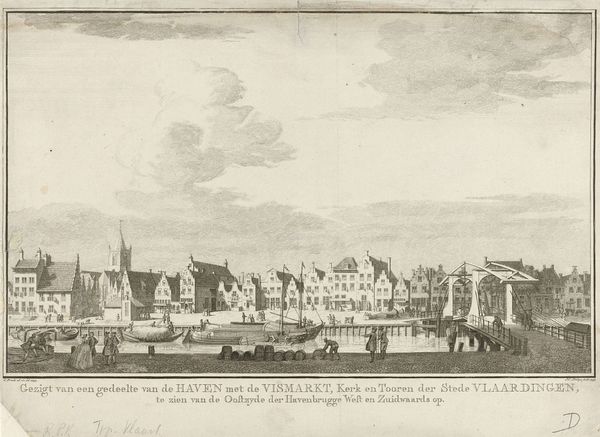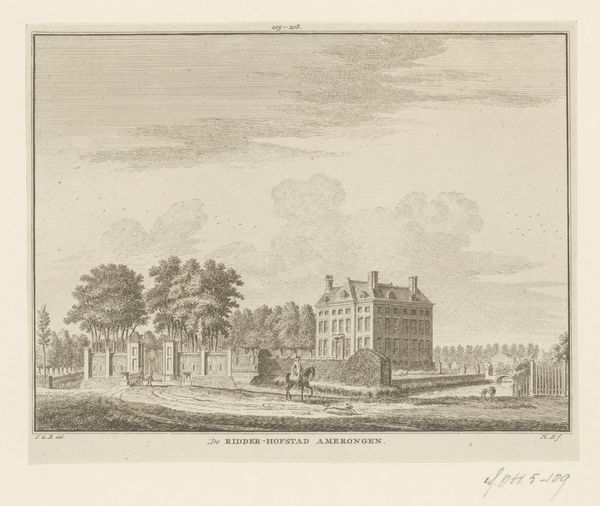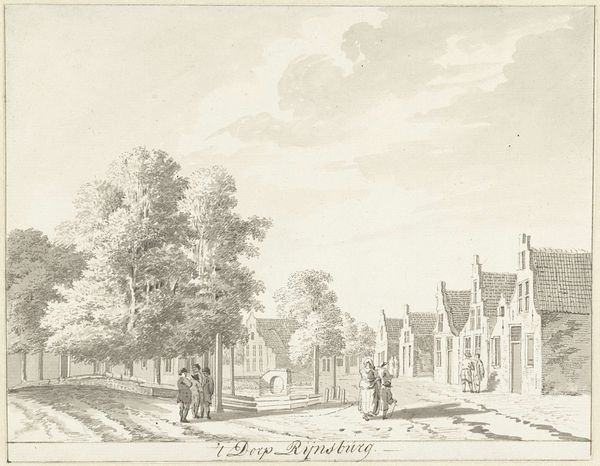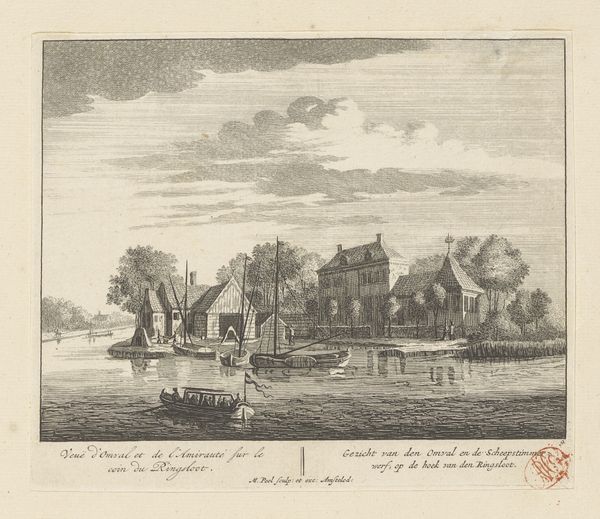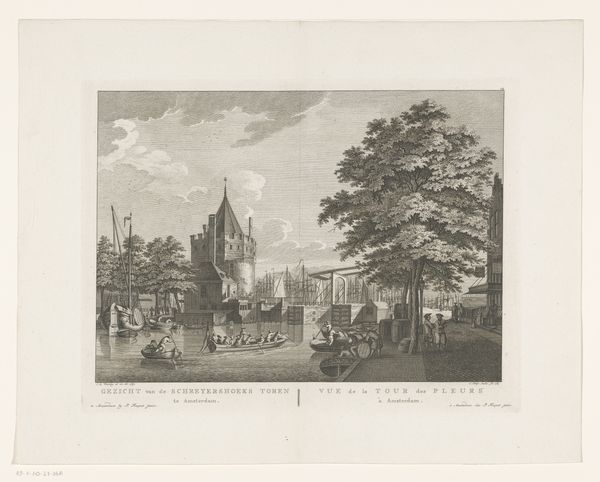
print, etching, engraving
#
aged paper
#
dutch-golden-age
# print
#
etching
#
old engraving style
#
landscape
#
river
#
line
#
cityscape
#
engraving
#
realism
Dimensions: height 190 mm, width 280 mm
Copyright: Rijks Museum: Open Domain
Paulus van Liender made this print of Overschie using etching, a printmaking technique dating back to the early 16th century. The process involves covering a metal plate with a waxy, acid-resistant substance called a ground. The artist then scratches an image into this ground, exposing the metal. When the plate is immersed in acid, the exposed lines are eaten away, creating grooves. The deeper the lines, the more ink they hold, resulting in darker lines in the final print. Look closely, and you'll see how Van Liender masterfully uses this technique to create depth and texture, from the rippling water to the fluffy clouds. The fine lines capture architectural details and the delicate foliage of the trees. Consider the labor involved: from preparing the plate, to the careful etching and printing, the artwork gives us an appreciation for the skilled work that goes into creating an image, offering a glimpse into the social and economic landscape of the time.
Comments
No comments
Be the first to comment and join the conversation on the ultimate creative platform.
